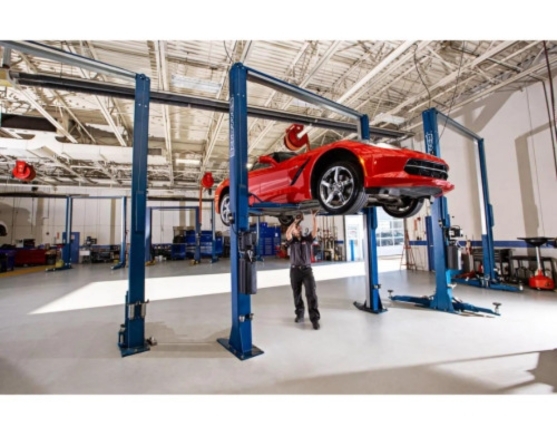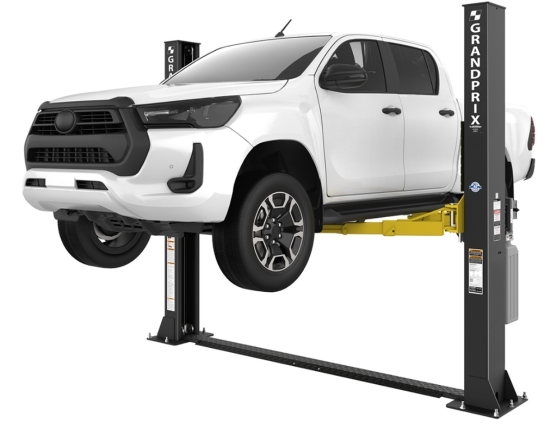A Complete Guide to Automotive Lifts: Types, Features, and Brands
19th Jun 2025
The days of crawling under cars with a flashlight and a floor jack are over. As a home mechanic or as someone who operates a busy garage, having the appropriate automotive lift can be not only good, but a game changer.
Recent advances in car lifts are safer, quicker, and considerably more efficient. And brands like the BendPak lift are setting the gold standard in reliability and performance. But the problem is that for any type, you have numerous options, so how can you be sure which one you need? We are about to lay that out.
Let’s lift the hood on this topic and get to it.
Why Invest in an Automotive Lift?
An automotive lift is a must-have tool if you are serious about professional or DIY car care.
Here’s why:
- Improved access to the undercarriage of your vehicle
- Better safety than ramps and jacks
- Boosts efficiency in busy garage settings
- Saves time during repairs and inspections
- Increases productivity within busy garages
- Minimizes physical burden (bye-bye crawling and squatting)
In simple terms, it allows you to work smartly, rather than hard.
Types of Automotive Lifts
There’s no one-size-fits-all answer, so here are your primary options:
1. Two-Post Lifts
The default option for serious home wrenchers and most auto shops. These lifts lift a car by the frame, freeing up the wheels.
Ideal for: General repair work, brakes, suspension
Pros: Compact footprint, cost-effective
Cons: Requires professional installation and a solid concrete floor

2. Four-Post Lifts
These lifts support the vehicle by the tires, which makes them suitable when performing wheel alignment or long-term storage.
Ideal for: Storage, oil changes, exhaust work
Pros: More stable, easier to load
Cons: Larger footprint, higher cost
3. Scissor Lifts
A more portable version: a cross-lift platform moves the cars up.
Ideal for: Quick service work, tire shops
Pros: Compact, portable
Cons: Limited lifting height and access underneath

4. In-Ground Lifts
This is often used by dealers and large service centers. These are installed flush into the ground and keep your garage floor clean.
Pros: Sleek, space-saving
Cons: Expensive, requires major installation work

Key Features to Look For
Let’s break down what really matters when shopping for your lift:
- Weight Capacity: Know what you’ll be lifting — small sedans or 1-ton trucks?
- Lifting Speed: Faster lifts = more productivity
- Safety Locks: Essential for preventing accidents
- Arm Reach & Design: Adjustable arms offer better compatibility
- Power Supply: Some lifts require 220V outlets; others run on 110V
- Clear Floor vs. Floor Plate: Clear-floor lifts offer better mobility; floor-plate models may be more stable
Top Brands to Know
Let’s talk names. Not all automotive lifts are created equal, and when it comes to safety, strength, and durability, brand matters.
BendPak
One of the most trusted names. A BendPak lift is built to handle serious lifting with unmatched safety features. They offer both two-post and four-post models that work well in pro garages and high-end home setups.
Why it stands out:
- Built to ANSI/ALI standards
- Heavy-duty construction
- Smart lift technology
- Long-standing industry reputation
Tuxedo
Tuxedo car lift offers reliable and affordable lifting solutions, making them a great choice for budget-conscious buyers who still value safety, durability, and essential features. Known for their user-friendly designs and solid construction, Tuxedo lifts are a popular option among both professional mechanics and serious DIYers.
Challenger Lift
Challenger Lift is known for building tough, high-performance, safety, and long-term durability, making them ideal for professional-grade operations.
Recognized for their cutting-edge technology, ergonomic design, and industry-leading safety features, Challenger lifts are a top choice for high-volume workshops and technicians who demand the best.
What’s Right for Your Garage?
Still wondering which lift is best? Here’s a quick cheat sheet:
- Tight space? Go for a mid-rise scissor lift or compact two-post model.
- Need versatility? A two-post lift is a jack-of-all-trades.
- Want to store vehicles? A four-post lift doubles as storage.
- Working on a budget? Tuxedo offers great lifts within your budget
- High usage? BendPak’s pro-grade options are worth every penny
Before buying, always check:
- Ceiling height
- Concrete thickness
- Electrical compatibility
- Measure twice. Buy once.
FAQs
Q: How high does my ceiling need to be for a two-post lift?
Usually around 12 feet. Some low-ceiling models work with 9–10 feet, but you’ll have limited headroom.
Q: Are car lifts safe to install at home?
Yes, if installed properly on a solid slab with the correct specs. Many lifts meet strict ALI/ANSI safety certifications.
Q: Can I use an automotive lift outside?
Some models are designed for outdoor use, but weather exposure can shorten their lifespan. Always check with the manufacturer.
Q: What’s the best lift for trucks and SUVs?
Look for lifts rated 10,000 lbs and up, like the BendPak 10AP or Challenger 16K series.
Q: Do car lifts require maintenance?
Yes — regular checks for hydraulic leaks, cable tension, and safety locks are key to long-term reliability.
Final Word
There’s never been a better time to upgrade your workspace. Stop wrestling with jacks and creepers. With modern lifts offering better safety, more power, and easier operation, you're not just lifting your vehicle — you’re lifting your whole experience.
Not sure which lift fits your space or vehicle best? No problem. Contact us today, and one of our specialists will guide you to the perfect option tailored to your needs.

